turning effects of forces
1/13
There's no tags or description
Looks like no tags are added yet.
Name | Mastery | Learn | Test | Matching | Spaced |
|---|
No study sessions yet.
14 Terms
moment → definition
The moment of a force is the product of the force and the perpendicular distance between the axis of rotation and the line of action of the force.
moment
moment of force about pivot = F x⊥d = F x Lcosθ
si unit: newton metre (N m)
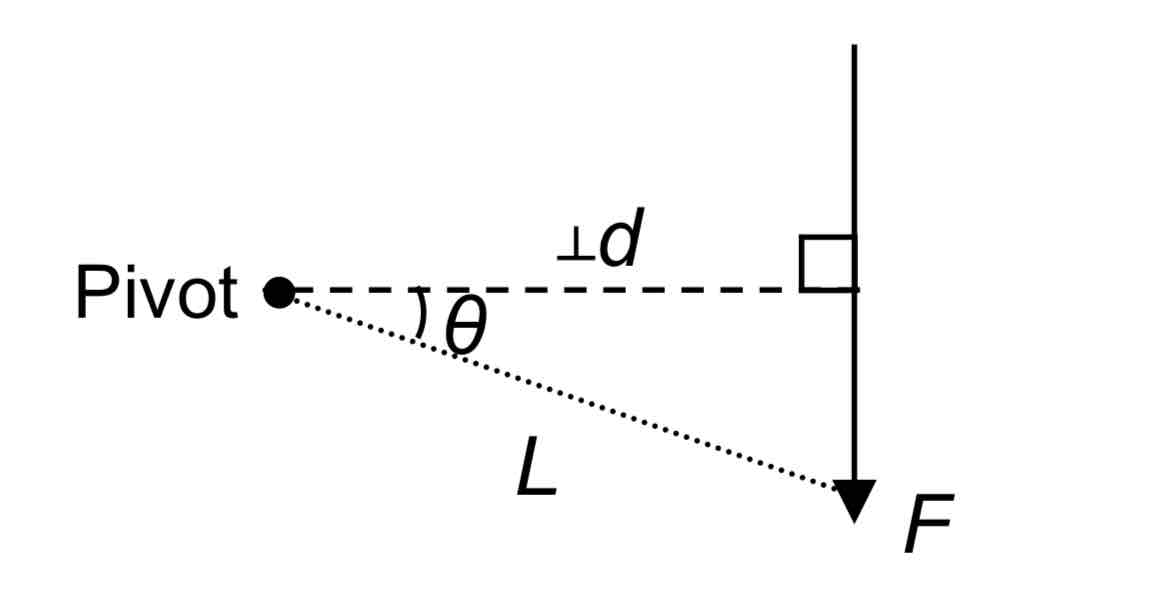
principle of moments
The Principle of Moments states that, for an object to be in rotational equilibrium, the sum of clockwise moments about any axis of rotation (or pivot) must equal the sum of anti-clockwise moments about that same axis (or pivot).
static equilibrium
translational equilibrium
the resultant force on the body in all directions is zero
rotational equilibrium
the resultant moment on the body about every axis is zero
centre of gravity
the point through which the entire weight of a body appears to act for any orientation of the object
regularly shaped object of uniform density
centre of gravity is the geometrical centre of the object
determining centre of gravity for an irregularly shaped object or objects with non-uniform density
Make 3 small holes near the edge of the lamina using the hole-puncher. The holes should be as far apart as possible from one another.
Suspend the lamina through one of the holes using the pin, cork, and the retort stand.
Hang a plumb line on the pin in front of the lamina.
Draw a line on the lamina over the plumb line with the help of a ruler when the plumb line is steady.
Repeat the above for the other two holes.
The point of intersection of the three lines is the position of the centre of gravity.
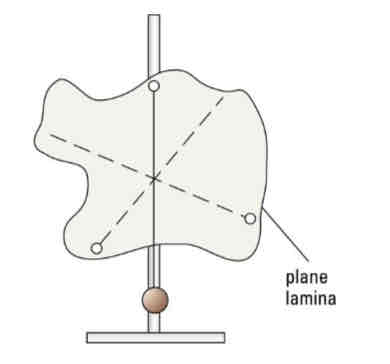
stability
the ability of an object to return to its original position after it has been tilted slightly
3 forms of stability: stable equilibrium, unstable equilibrium and neutral equilibrium
stable equilibrium
the centre of gravity rises and then falls back again.
The line of action of its weight W lies inside the base area of the cone
The anti-clockwise moment of its weight W as seen from the front view about the point of contact C causes the cone to return to its original position

unstable equilibrium
the centre of gravity falls and then continues falling.
the line of action of its weight W lies outside the base area of the cone
the clockwise moment of its weight W as seen from the front view about the point of contact C causes the toppling of the cone
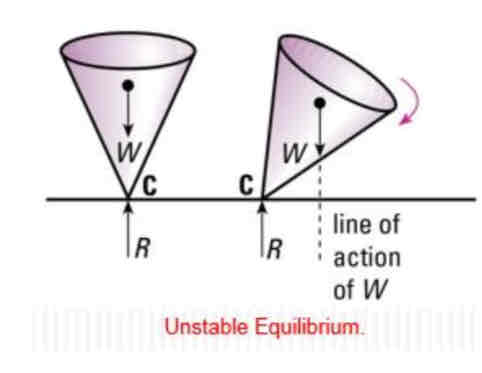
neutral equilibrium
the centre of gravity neither rises nor falls; it remains at the same level about the surface supporting it
The lines of action of the two forces (weight and normal contact force) coincide
the net moment about the point of contact is zero
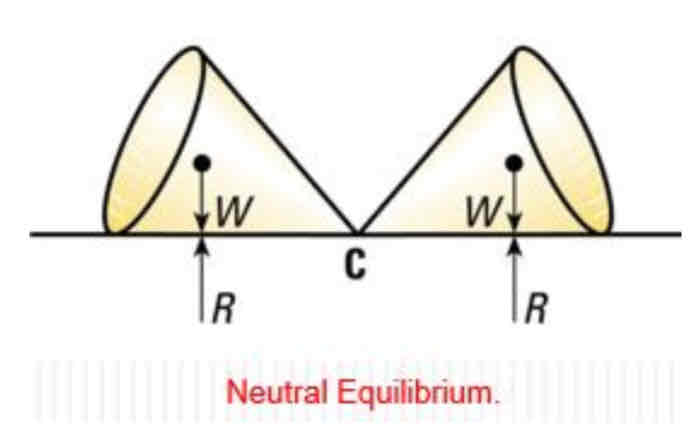
to increase the stability of an object
line of action of an object’s weight from the centre of gravity to lie within the base area when tilted
low centre of gravity
wide base area
low centre of gravity
more stable as the can be tilted to a larger angle before the line of the action of its weight falls outside the base area resulting it to topple as compared to the object with a high centre of gravity
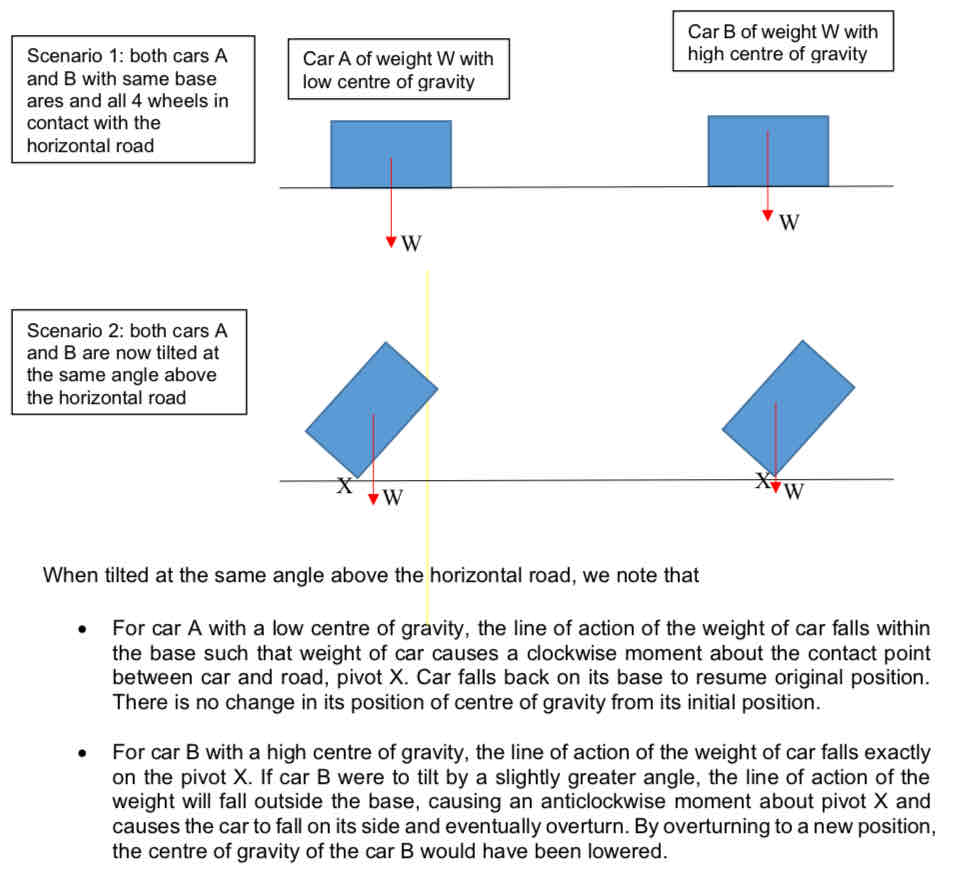
wide base area
more stable as the object can be tilted to a larger angle before the line of the action of its weight falls outside the base area resulting it to topple as compared to the object with a narrow base
